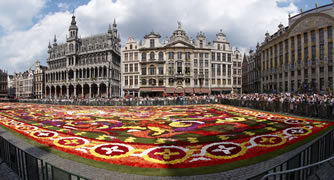

 |
The First International Conference on Smart Portable, Wearable, Implantable and Disability-oriented Devices and Systems SPWID 2015 |
|
|||||||||||
| Details: |
ISSN: to be announced |
|
||||||||||||||||||
All tracks/topics are open to both research and industry contributions.
Tracks:
SENSING DEVICES
Wearable devices; Implantable devices; Brain-driven devices (brain signal capturing devices); Wearable sensors, actuators, input/output devices; Smart textile technologies, textile sensing and feedback, e-textiles, smart fabrics; Eyewear mounted sensors and actuator systems; Wearable displays; Smart watches; Smart glasses; Smart night-vision devices; Smart audio drivers/amplifiers; Smart accompanying robots; Manufacturing challenges; Societal implications, health risk, environmental, privacy aspects
MOBILE COMMUNICATION
Wearable sensor networks (wireless, on-body, near-body, Internet…); Augmentative and alternative communication devices; Computer-operating I/O devices for persons with disabilities; Wearable applications designed for and delivered via smartphones; Smartphones as personal wearable communication devices; Smartphones with sensing modalities; Interaction and cooperation via smartphones; Communication with smart-watches, smart-glasses; Smart communication technologies (e.g., Bluetooth)
ASSISTIVE
Smart/intelligent prosthetics; Organ replacement devices (artificial organs); Accompanying robots; Patient/citizen body-driven technology (self-adaptive devices to body's conditions); Devices for helping services for persons with sense disabilities (blind, not-mobile, etc.); Designing large-scale grids and clouds of smartphones for assistive coordination; Motion detection and activity recognition; Neurological disabilities; Personalization, customization and lifelong learning in activity recognition
SYSTEM DESIGN
Wearable systems design; Ambient intelligence driven system requirements; Requirements for augmented context-awareness; Systems designs combining wearable features and ubiquity; Designing eyewear systems; Smartphone services design and service composition; Smartphone technologies and sensing specialized devices; User modeling, user evaluation, usability engineering, user experience design; Cognitive networks for medical communities; Interfaces (explicit, implicit, hands-free, speech-based, haptics, context-aware …); Integration of medical assistive devices with healthcare systems; Human factors, perception, acceptance, ergonomics; Modeling, simulations and empirical experiments; Tools, testbeds and deployment challenges
APPLICATIONS
Design of smart clothing in medicine, wellness, healthcare, disabilities, elderly; Virtual hospitals; Ambient-assisted living; Activity monitoring devices (walking, working, sleeping, exercising, …); Pain control devices; Lifestyle improvement devices; Alert and hazard situations monitoring devices; Patient/citizen localization; Life-threatening cases assessments; Studies based on large cell phone deployments; Teaching and education; Consumer markets and entertainment; Case studies; Risks with medical devices; Social impact and acceptance

